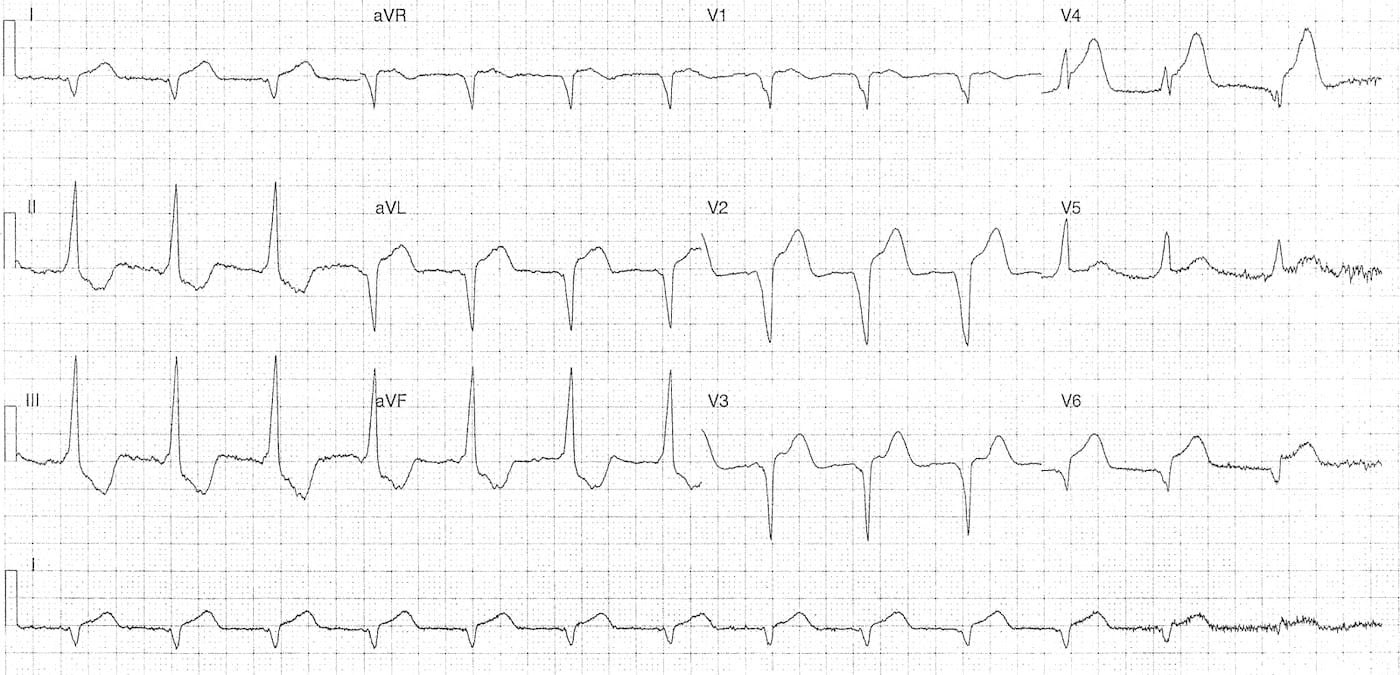ECG Case 100
31 yr old female who is 5 days post-partum she was brought to the Emergency Department following a episode of collapse. On arrival to the Emergency Department she was hypotensive (systolic BP ~80 mmHg) with an altered conscious level, complaining of chest pain and headache.
Describe and interpret this ECG
ECG ANSWER and INTERPRETATION
Rate:
- 60 bpm
Rhythm:
- Regular
- Sinus rhythm
Axis:
- Normal
Intervals:
- PR – Normal
- QRS – Normal
Additional:
- ST Elevation in leads aVR & aVL (<1mm font=””>
- Upsloping ST depression in leads V2-6
- Maximal in leads V3-4
- Flat ST depression in the inferior leads
- Prominent T waves in leads V2-4
Interpretation:
- Features consistent with a De Winter pattern
- Suggesting potential LAD pathology
- DDx Demand ischaemia / perfusion mismatch
Given the patients age and medical history broader differentials for shock and ischaemic ECG features would be:
- PE
- Sepsis
- Endocrine – Sheehan Syndrome (postpartum pituitary gland necrosis)
CLINICAL OUTCOME
Following review of the initial ECG urgent cardiology input was obtained and an emergent CTPA was performed to exclude PE as a potential cause.
On return from a negative CTPA the patient complained of further chest pain, repeat ECG below:
Clear anterolateral ST elevation and inferior ST depression. The patient was transferred for urgent angiography which showed a 90% mid LAD lesion treated with bioresorbable stent.
Subsequent CTPA revealed a coronary artery dissection as the cause for the acute LAD lesion.
Spontaneous Coronary Artery Dissection (SCAD)
This is a rare phenomena occurring in ~4% of all acute MI’s. Approximately 90% of cases occur in females and it accounts for 1/4 of MI’s in the under 50 yr old age group. Recurrence rate is between 13-18%.
There are multiple risk factors including:
- Fibromuscular dysplasia
- Pregnancy
- Connective tissue disorders
- Systemic inflammatory conditions
- Intense exercise
- Intense emotional stress
- Labour and delivery
- Valsalva-like events
- Sympathomimetic use
TOP 150 ECG Series
Emergency Medicine Specialist MBChB FRCEM FACEM. Medical Education, Cardiology and Web Based Resources | @jjlarkin78 | LinkedIn |


